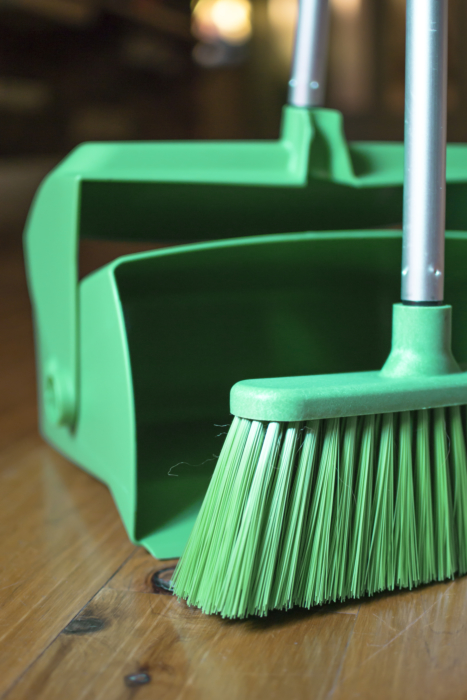Guide To Choosing The Right Brush
Written by Adam Serfas

Before selecting a brush type, it helps to understand the different options. There are three main types that differ by manufacturing methods. Each has distinct advantages and disadvantages your business should consider before choosing which is right for your needs.
To view this content as a printable pdf click here.
Staple Set

Staple set brushes are with one of the most common methods. First, holes are drilled into a plastic or wood block. Wood is not suitable for a food processing or pharmaceutical plant, or for any application where high sanitary levels must be maintained. The blocks come in a variety of shapes. As a result, hand brushes, cylinder brushes, disc brushes, toothbrushes and almost any shape you can imagine can be staple set. Brush filaments are forced into the holes, and securely fastened with a staple to the bottom of the hole.
Advantages
- Low cost
- Flexibility
Virtually any block shape can be staple set. Almost any bristle type can be used.
Disadvantages
- Bristles can pull out
Bristles can dislodge, if stuck in a pinch point, thus a bristle could get into the final product. If you are a food processing plant, you do not want your customer to find bristles in whatever product you produce.
- Organic or other non-desirable material can wick down between the bristles into the tuft hole
This is not sanitary, very difficult to clean, and can lead to bacterial and/or insect infestation.
Epoxy or Resin Set

In exopy or resin set brushes, the bristles are set into the block by using epoxy or a resin. Some brush manufacturers first staple set the bristles into holes, then let resin flow into the holes, thus offering additional bristle security.
Advantages
- Not likely to trap foreign materials
If done well, the resin or epoxy seals the hole, thus making it much less likely dirt, moisture or other foreign materials can “infect: the brush.
- Bristles remain in place
It is much less likely bristles will pull out during usage.
Disadvantages
- Availability
Some block shapes are not easy to resin set, thus you may not be able to get a resin set brush in the configuration you need.
- Cost
Epoxy and resin set brushes are more expensive than staple set brushes.
- Resin can potentially dislodge
While the bristles are securely fastened, it is possible the resin itself can break or flake off, thus getting into the end product. If the brush is made well, this is unlikely.
- Difficult to color code
The resin or epoxy is typically not the same color as the block and bristles. If you have a color coding program, and you use Total Color Coding, this may be an issue. If a piece of resin contaminates – imagine either a piece of resin flaking off of a brush, or an entire brush falls into a processing area- it may be difficult to trace the origination point.
Ultra Safe Technology Brushes®

This is the latest method of making sanitary brushes, developed by Vikan, a Denmark company. These are the most sanitary brushes currently available. Ultra Safe Technology® brushes are made by molding the block around a bristle tuft. To learn more view this video.
Advantages
- Unlikely to trap foreign materials
Virtually no spaces for foreign materials to get into.
- Color coding friendly
No resin or epoxy is used, so the block and bristle color are a complete match.
Easy traceability, perfect for Total Color Coding programs.
- Bristles remain intact
Bristles are literally part of the block, extremely unlikely to shed.
• Easier cleaning, drying & inspection
The spacing between bristle units allow for easier cleaning, drying and inspection.
Disadvantages
- Cost
These brushes are similar in cost to a quality resin set brush.
- Limited availability
The brush you need may not be available.
Should you have any additional questions regarding brush types and availability, please contact our office.


